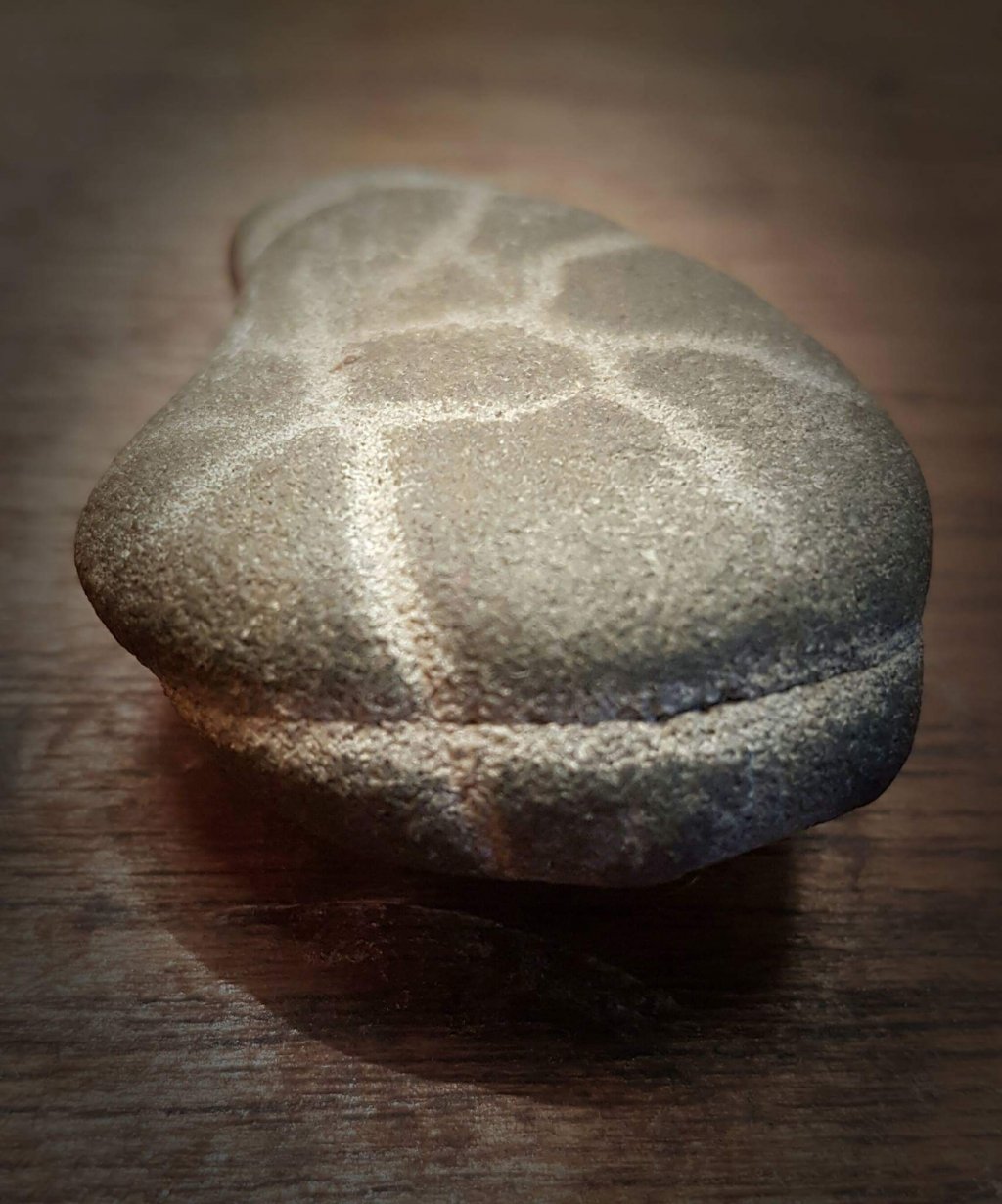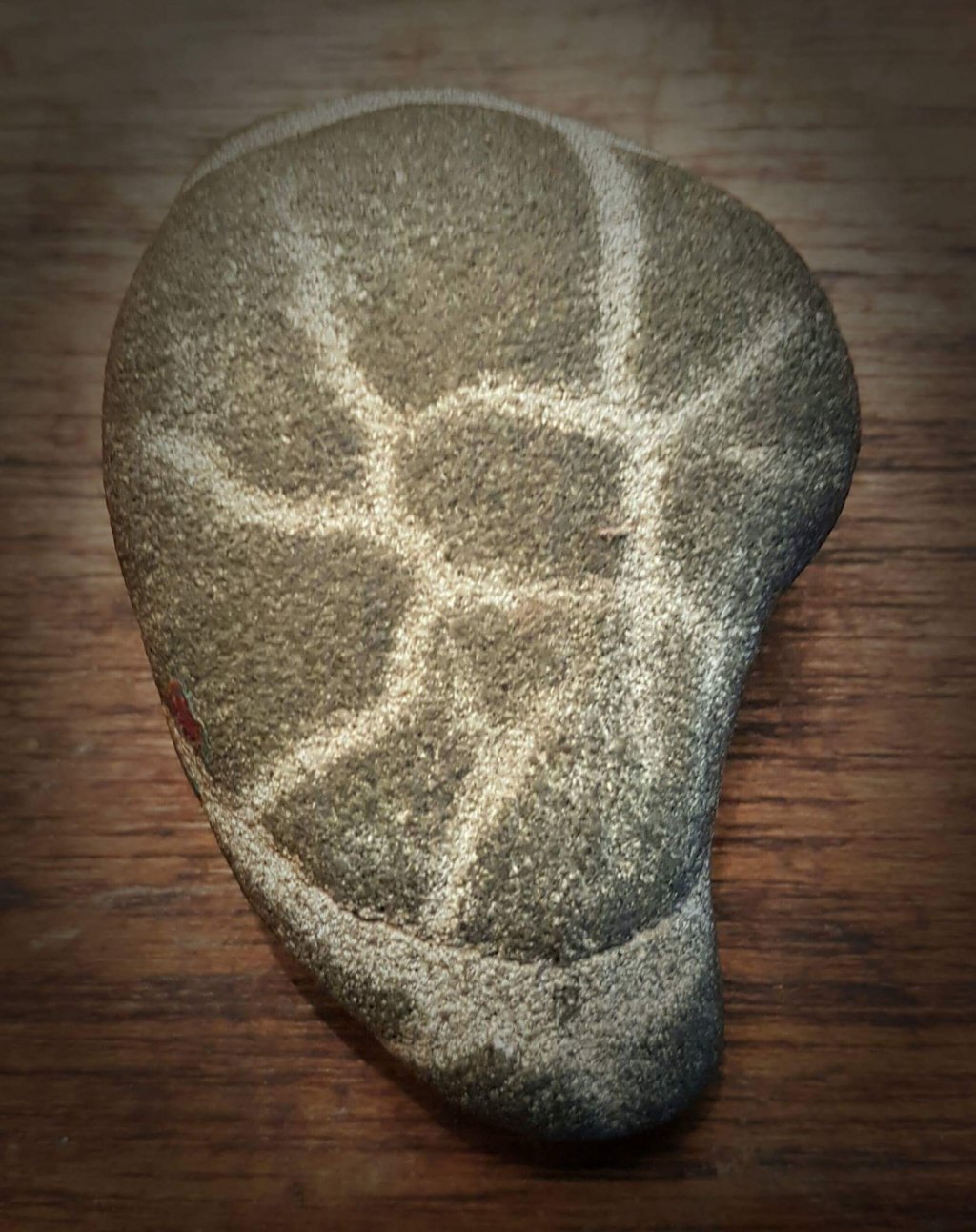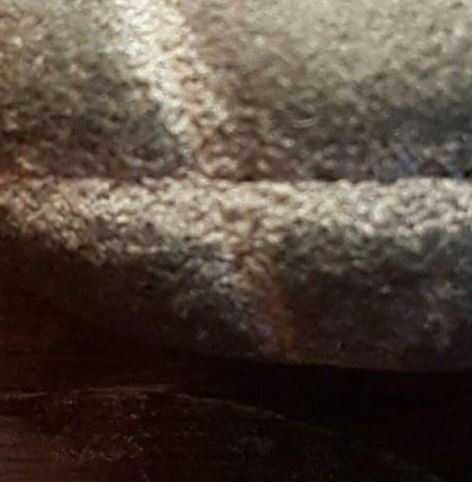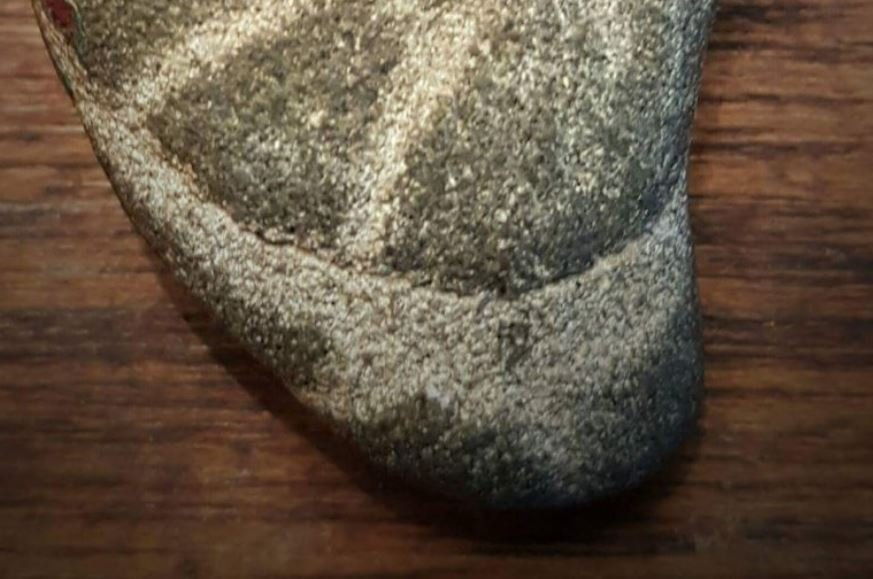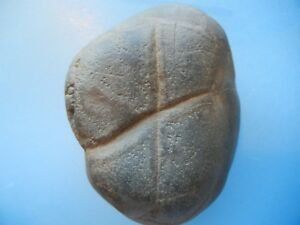Such an odd rock. Dont know if its been hand crafted that way for some reason, if the lines are for rope it doesnt make sense even more, unless possibly a club. I was thinking along the lines that the rock could have a softer material within cracks (whiter) which is slowly eating away before the surrounding (darker) rock, but it would most likely go through the whole rock, not stop half way.
The main 'carved' horizontal line has a crack, suggesting it may be about to split in half soon, and this seems more natural parting of foliation or again weak/soft gritty sandstone layer, not a result of a man made rub mark. Interesting!
